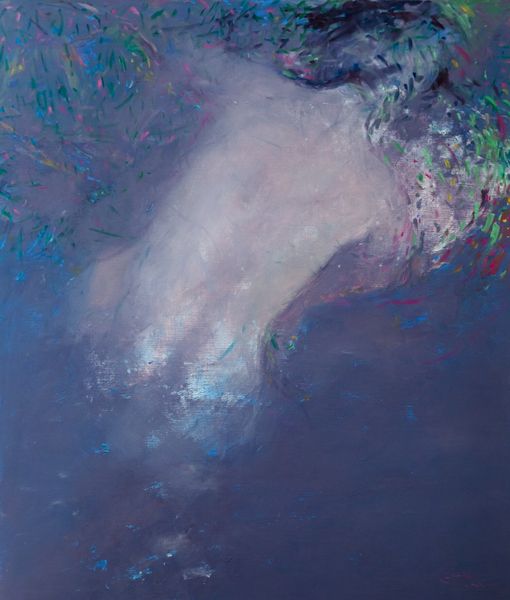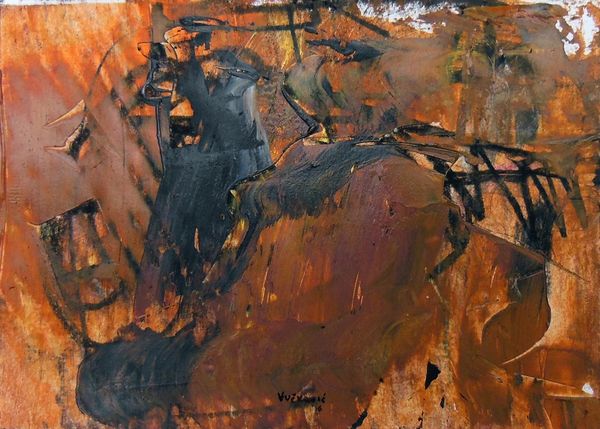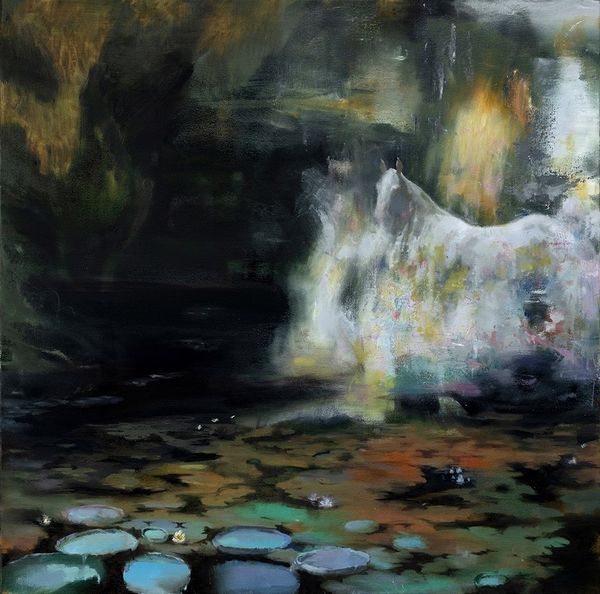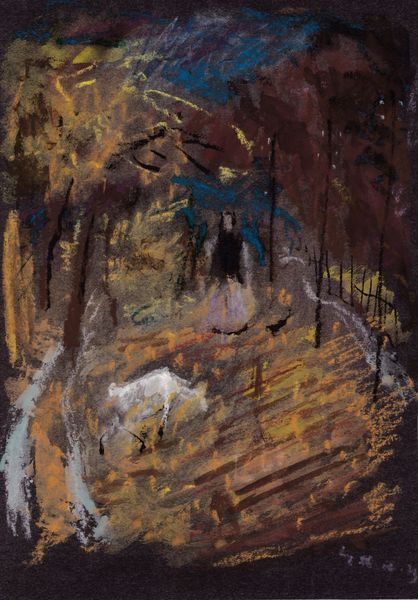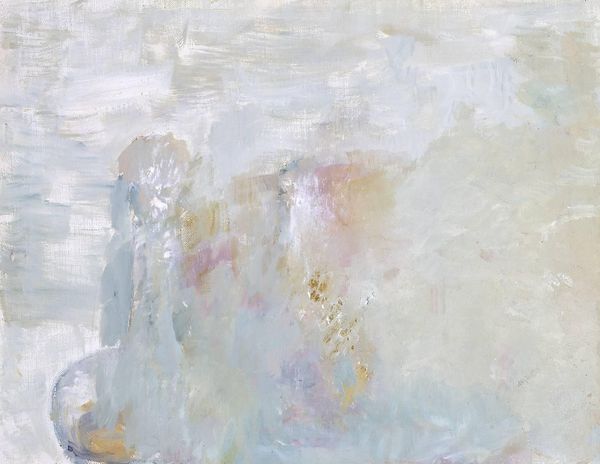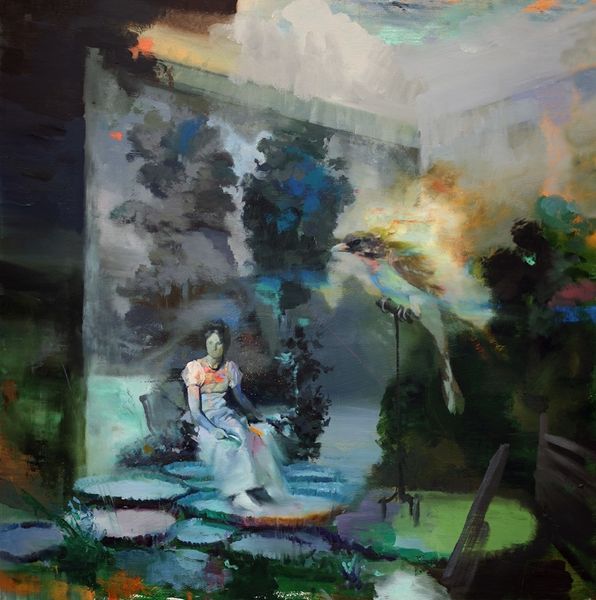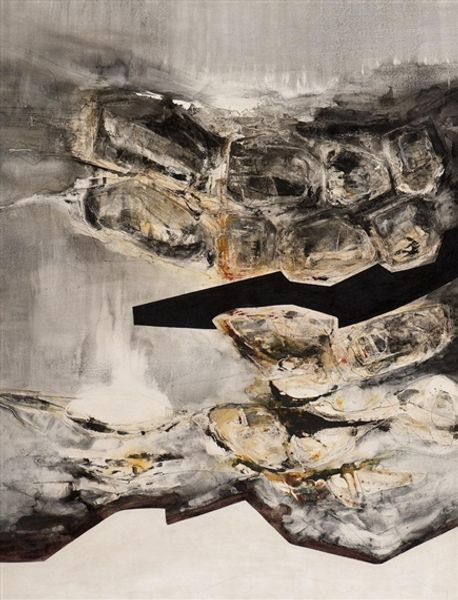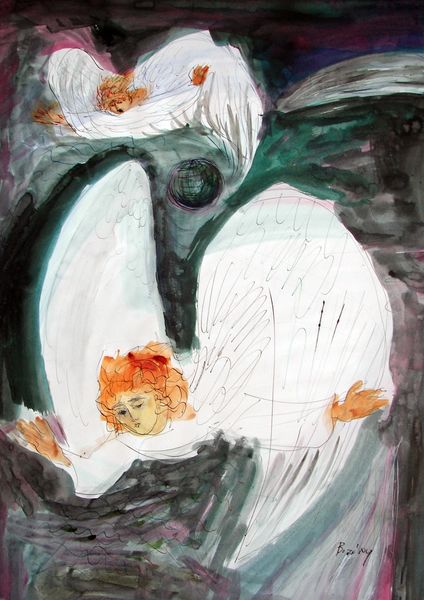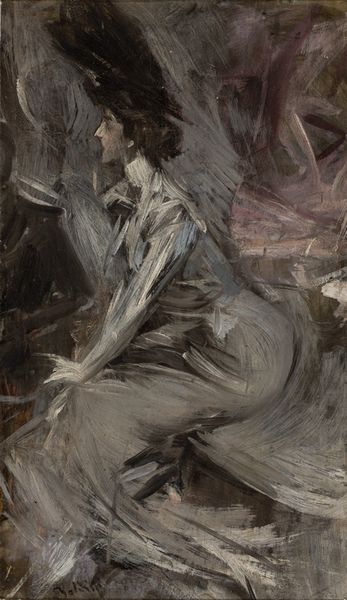
Copyright: Modern Artists: Artvee
Curator: The work before us is entitled "It's Always Warmer in the Winter" by Joshua Flint, created in 2016. The medium here appears to be primarily oil paint. My initial impression is one of turbulent, unsettling beauty. Editor: Immediately, I notice the disrupted spatial logic; the layering creates a sense of unease. I see a palette dominated by umber and gray. Can you elaborate on any of the symbolic components? Curator: Flint often employs figures and animals—here, a person and what appears to be a crocodile or large lizard. The man's posture—covering his head as if warding off a blow—suggests vulnerability and potential aggression, mirrored perhaps by the reptile’s lurking presence. Traditionally, crocodiles can symbolize primal fears or hidden dangers. Editor: Indeed. Observe how the artist uses swift brushstrokes, lending to a raw, almost visceral quality. It looks to me almost like a study of conflicting forces. The flowing, almost watery paint application blurs the distinctions between figure and ground. Curator: I find it particularly compelling how Flint plays with archetypes, perhaps referencing the darker aspects of the human psyche and power dynamics, expressed through these recurring symbols. It feels like a fragmented myth. Editor: The way the artist deploys the oil paint is particularly intriguing, because he thins down certain washes almost to the point of seeming like a watercolor technique. The figure is placed off-center; this obliqueness destabilizes a conventional reading and invites further introspection on its construction and emotional center. Curator: His style incorporates aspects of Surrealism and Neo-Expressionism, mixing familiar forms with dreamlike ambiguities, ultimately probing anxieties about dominance and submission in the face of natural forces. I find this painting offers insight into these universal themes in unexpected ways. Editor: Absolutely, and focusing on formal analysis really brings that interpretation to the fore, demonstrating the powerful role of compositional strategies in delivering challenging emotional realities to an audience.
Comments
No comments
Be the first to comment and join the conversation on the ultimate creative platform.

